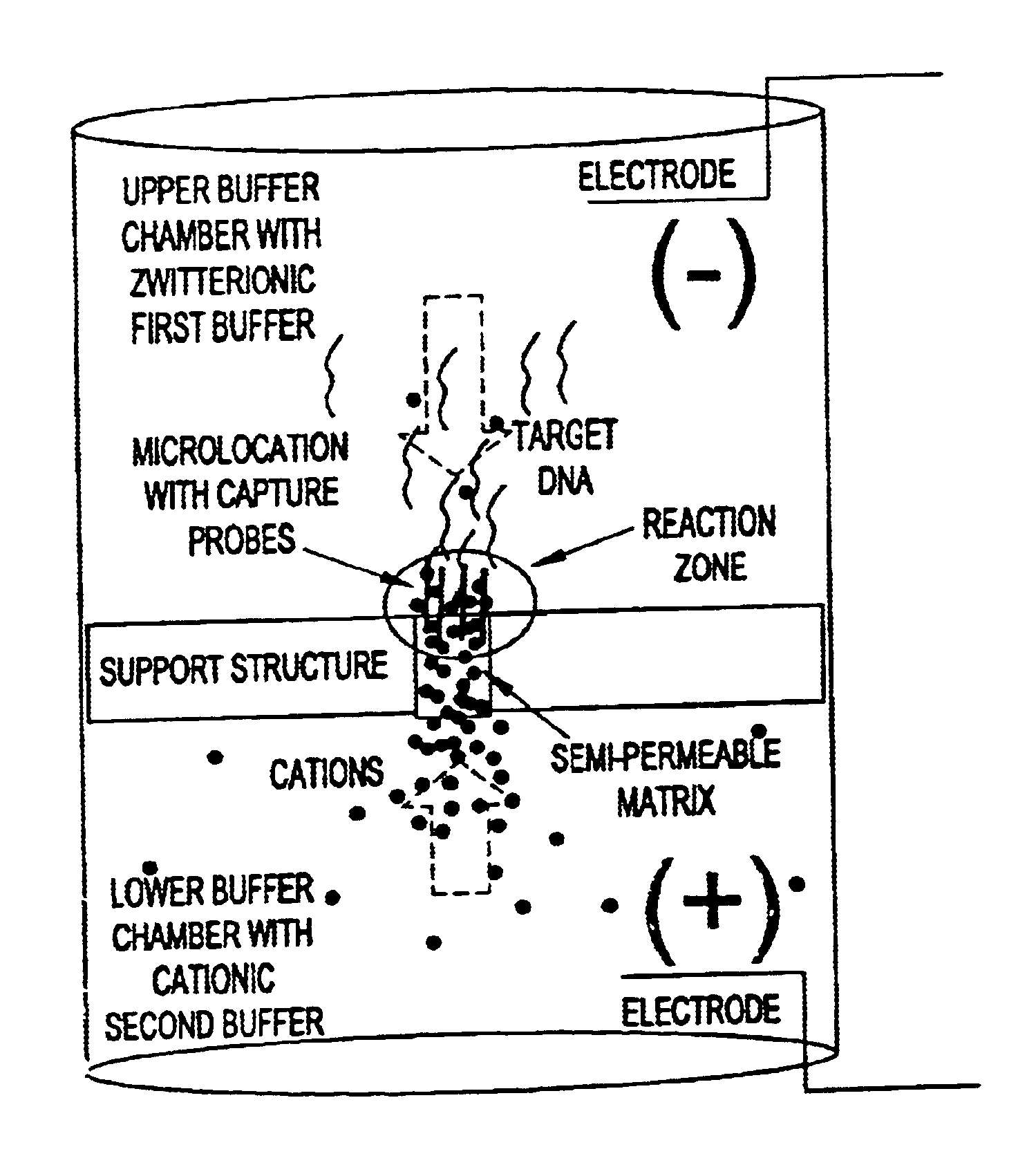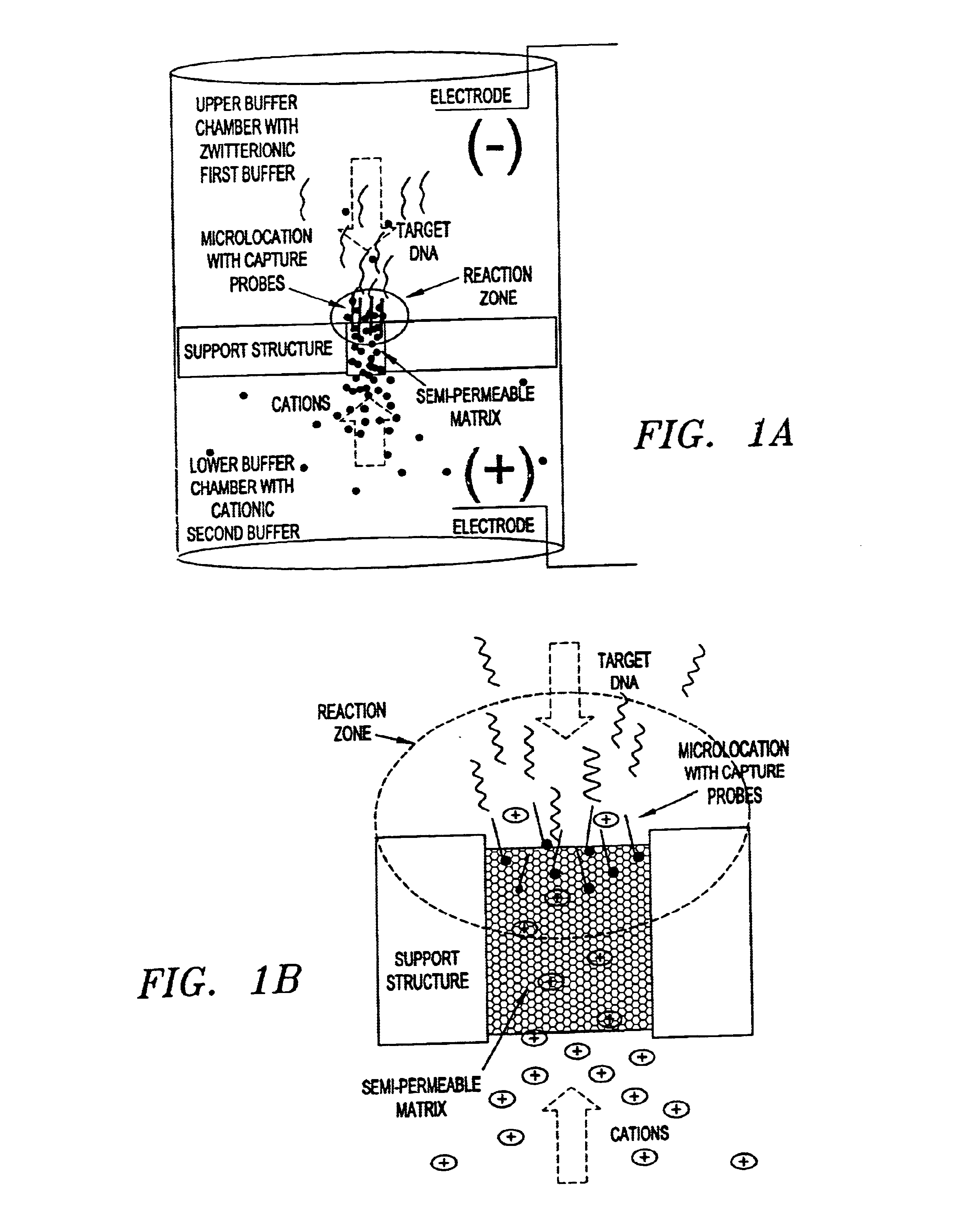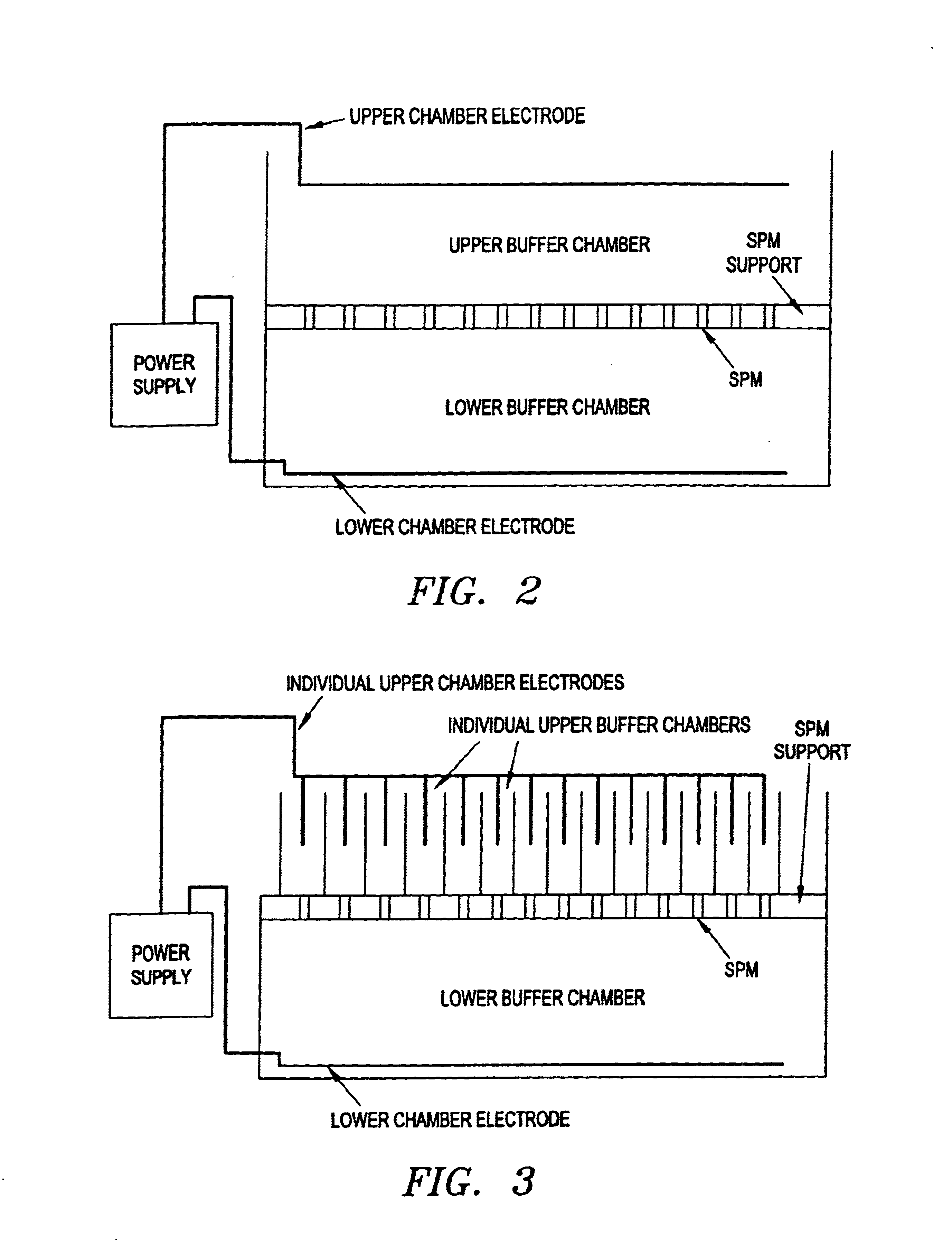Electronic systems and component devices for macroscopic and microscopic molecular biological reactions, analyses and diagnostics
a technology of electronic systems and components, applied in the field of electronic systems and component devices for macroscopic and microscopic molecular biological reactions, analyses and diagnostics, can solve the problems of many techniques that are limited in their application, require a high degree of accuracy, and complex and time-consuming, and achieve favorable reaction zones for reactant molecules
- Summary
- Abstract
- Description
- Claims
- Application Information
AI Technical Summary
Benefits of technology
Problems solved by technology
Method used
Image
Examples
example 1
Semipermeable Matrix Preparation
Streptavidin-agarose Preparation
2.5% glyoxal agarose (Bio Whittaker) was prepared in water per manufacturer's instructions. Agarose solution was incubated at 60.degree. C. until ready to use. Streptavidin (Boehringer Mannheim) was dissolved in 100 mM sodium phosphate, pH 7.4 to a final concentration of 5 mgs / ml. Fresh 200 mM sodium cyanoborohydride in sodium phosphate, pH 7.4 was prepared. Streptavidin-agarose (4:1), was mixed and incubated at 60.degree. C. for 2 minutes.
Gels were cast in either cut down Pasteur pipettes (.about.5 mm diameter gel tubes) or 1 mm holes drilled into an ABS plastic plate (for the device shown in FIG. 10). Pipettes received 150 microliters, and sample plate holes received 5 microliters of SA-GA. After gelling, cyanoborohydride solution was pipetted over the top of the gels and the reduction reaction allowed to proceed for 2 hrs at room temperature or 16 hrs at 4.degree. C.
Streptavidin-polyacrylamide Preparation
PEG-Streptav...
example 2
Electronic Hybridization and Dehybridization
For this example, the gel tube apparatus illustrated in FIG. 12 was used with an agarose / streptavidin SPM synthesized as described in Example 1.
Attachment of Capture Oligonucleotides (Specific Binding Entity):
Upper and lower buffer reservoirs were filled with 50 mM histidine, pI. Specific capture ATA5 (5'biotin-GATGAGCAGT TCTACGTGG [SEQ. ID NO. 1]) or nonspecific ATA4 (5'biotin-GTCTCCTTCC TCTCCAG [SEQ. ID NO.2]) oligos were pipetted onto the top of the gel (5 microliters 500 nM in 50 mM histidine, pI, 10% glycerol). The lower buffer reservoir was biased positive and the oligos electrophoresed into the gel for 2 minutes, 20V using a Bio-Rad PowerPac 1000 power supply. Reversing the bias for 2 minutes effected an electronic wash. Gel tubes were then rinsed in histidine buffer, pI.
Hybridization:
Upper buffer chamber was filled with 50 mM histidine, pI and the lower buffer was filled with 100 mM histidine, pH 5. BodipyTR labeled RCA5 reporter (...
example 3
SNP Mutation Discrimination in H-Ras System
For this example, the gel tube apparatus illustrated in FIG. 12 was used with an agarose / streptavidin SPM synthesized as described in Example 1.
Capture:
Ras G wild type and Ras T mutant captures are loaded as per Example 2.
(RAS G: 5'biotin-CACACCGGCG GCGCC [SEQ. ID NO.4],
RAS T: 5'biotin-CACACCGTCG GCGCC [SEQ. ID NO. 5])
Hybridization:
As per example 2 using BodipyTR labeled Ras C reporter complement (5'btr-GGCGCCGCCG GTGTG [SEQ. ID NO. 6].
Stringency / Dehybridization:
As per example 2.
Results:
Hybridization signal was observed on both wild type and mutant gel caps before reversing the bias. By reversing the bias, mismatch signal was selectively removed after biasing 5 minutes, 70 V in 20 mm sodium phosphate, pH 7.4. A discrimination ratio of 79:1 was obtained.
PUM
| Property | Measurement | Unit |
|---|---|---|
| Pore size | aaaaa | aaaaa |
| Pore size | aaaaa | aaaaa |
| Molar density | aaaaa | aaaaa |
Abstract
Description
Claims
Application Information
 Login to View More
Login to View More - R&D
- Intellectual Property
- Life Sciences
- Materials
- Tech Scout
- Unparalleled Data Quality
- Higher Quality Content
- 60% Fewer Hallucinations
Browse by: Latest US Patents, China's latest patents, Technical Efficacy Thesaurus, Application Domain, Technology Topic, Popular Technical Reports.
© 2025 PatSnap. All rights reserved.Legal|Privacy policy|Modern Slavery Act Transparency Statement|Sitemap|About US| Contact US: help@patsnap.com



